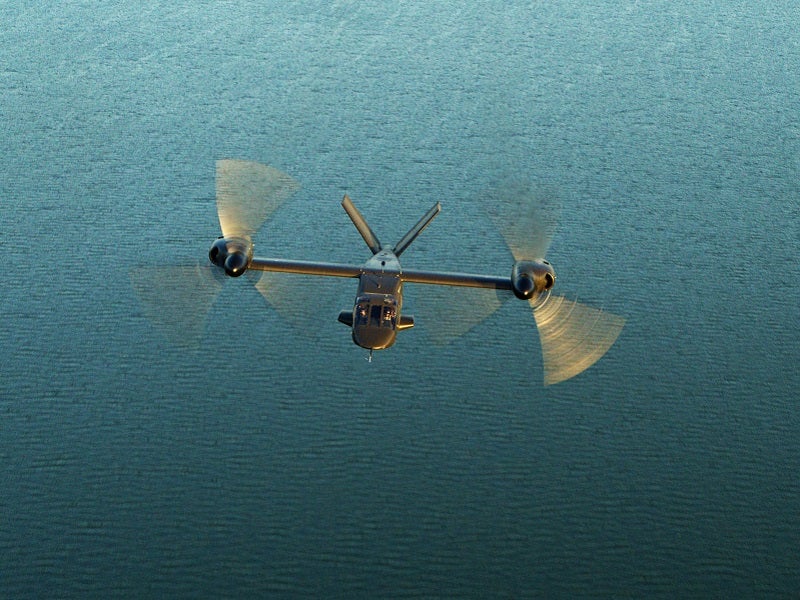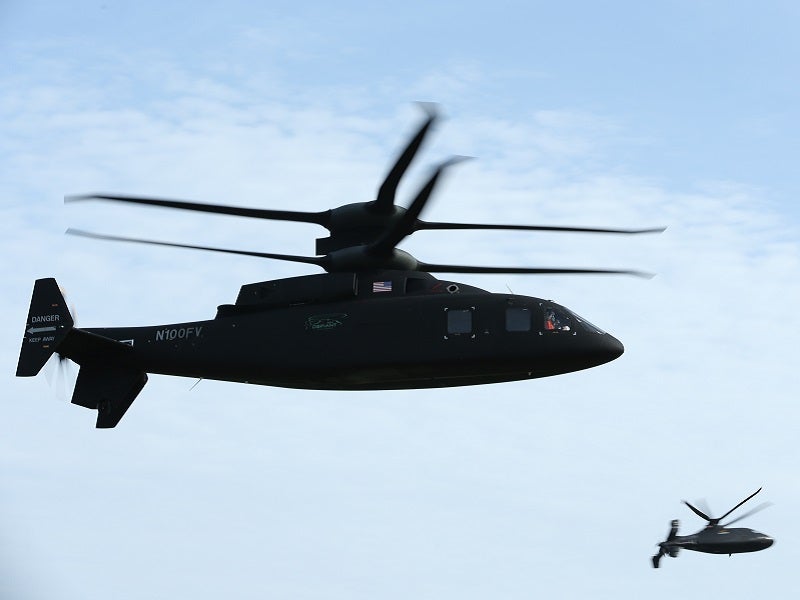
The selection by the US Army of Bell Textron’s V-280 Valor tiltrotor platform for its Future Long Range Assault Aircraft (FLRAA) will enable it to conduct operations with greater independence of its sister service, the US Air Force, in a significant departure of traditional operational practices.
The US Army initiated the FLRAA programme in 2019 as part of its Future Vertical Lift (FVL) initiative to replace a portion of its assault and utility helicopter fleet. The FLRAA is intended to eventually replace the UH-60 Black Hawk helicopter, which has been in service for more than four decades.
In a 5 December announcement, the US Army said the FLRAA platform would “expand the depth of the battlefield by extending the reach of air assault missions and enabling ground forces to converge through decentralised operations at extended distances.”
“I am excited to be part of this momentous day for our Army,” said Doug Bush, Assistant Secretary of the Army for Acquisition, Logistics, and Technology, in a statement. “The… execution of the FLRAA programme strategy will deliver the transformational capabilities we need to support the joint force, strengthen deterrence and win in multi-domain operations.”
Step change, new capability
With a range of up to 800 nautical miles and supposed 280kt top speed, the down-selection of the V-280 will enable the US Army to operate “in its own tactical environment”, according to Daniel Morris, lead analyst for aerospace, defence, and security at GlobalData.
“It means that the US Army can operate over longer distances. According to some analysts, the range and speed will allow it to ‘island hop’, which further highlights that the US military still considers China and the Pacific as its main adversary,” said Morris, adding that with the V-280 the US Army would be able to conduct tactical troop movement without relying on other services.
However, the track record of tiltrotor use by the US Navy, US Marines, and US Air Force includes a number of fatal accidents with the V-22 Osprey aircraft, to a point at which US Marine Helicopter Squadron 1, effectively the US Presidential Flight Marine 1, does not allow the incumbent US president to fly in the platform. Instead, US presidents are still ferried by the more traditional Sikorsky S-61 helicopter.
The next steps for the industry team behind the V-280 will be the completion of a virtual prototyping process that will directly support design, integration, training, and developmental test activities, according to the US Army. The virtual prototyping process was created as part of acquisition reforms aid at speeding up delivery timelines and approved by the US Congress.
Morris said that the virtual prototype created by Bell Textron would be able to be modified with inputs from both test pilots and the US Army, with the first unit expected to be equipped with the V-280 FLRAA aircraft by 2030. An initial physical prototype is due to be delivered to the US Army by 2025.
Of the prototyping method, Major General Walter Rugen, director of the US Army’s FVL Cross-Functional Team, said on 5 December that the “prototyping and risk-reduction efforts” allowed the US Army to “significantly reduce” the time needed to get to the down-select decision.
Act of Defiance?
The competitor to the V-280 for the FLRAA award was the SB-1 Defiant X, produced by US aerospace and defence giants Lockheed Martin and Boeing. The equally unique co-axial concept of the Defiant X, and the smaller Raider X platform, was a design that Morris said was still “relatively new…for US helicopters.”

Co-axial designs are widespread across the Russian military and its export markets, with the design offering improved hover and stability at low speeds, while also featuring the redundancy of being able to safely land should, in twin-engine configurations, the aircraft lose power in one engine, in the same way a traditional rotary helicopter could.
“I don’t expect the two largest defence aerospace manufactures in the world Lockheed and Boeing to take the news lying down and will most likely make a consorted effort to win the [FLRAA-related] FARA programme. It is also the most advanced design for the FARA programme and will have learnt a lot from their time in the FLRAA programme,” Morris said.
In addition, while the US Army was looking to move ahead with the V-280 tiltrotor, it is not expected that it will provide a one-for-one replacement to the thousands of UH-60 helicopters currently in service, with Morris stating that it was likely the US Army could retain “some form” of traditional helicopter for simpler mission requirements and maintaining force mass.
“Also, for export not all militaries will be able to afford or maintain such advance systems as the V-280 so I don’t think we have seen the end of traditional helicopters,” Morris explained.







